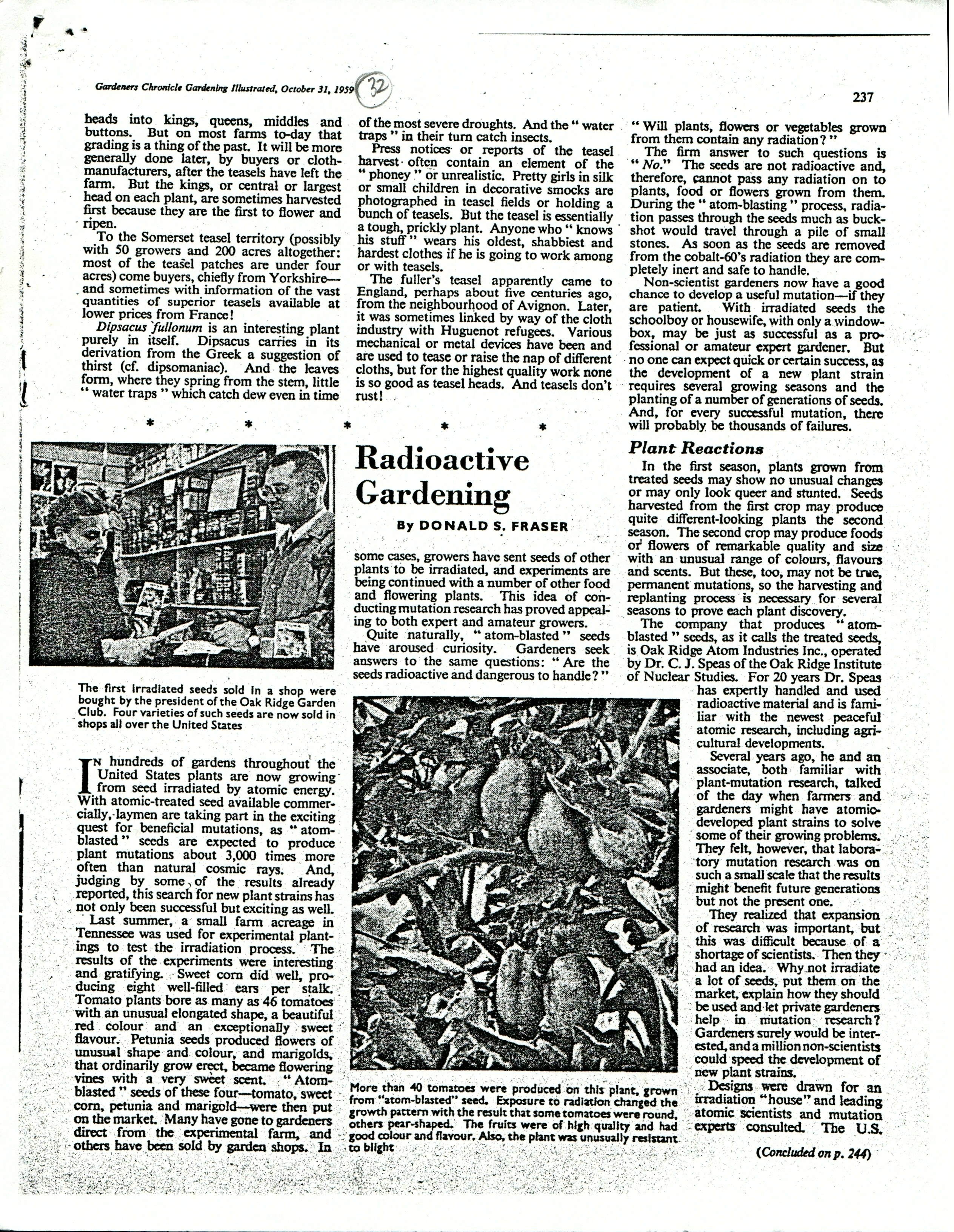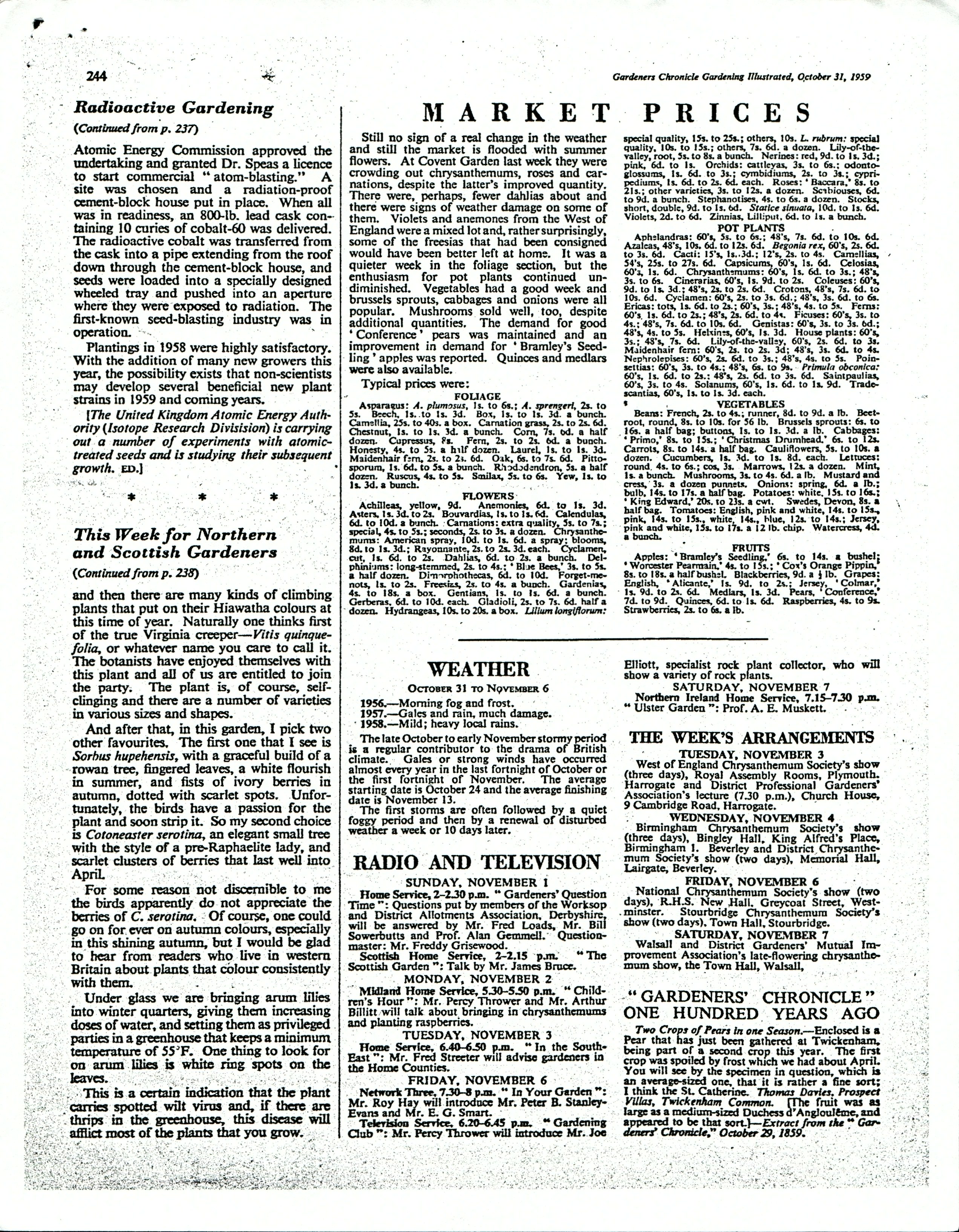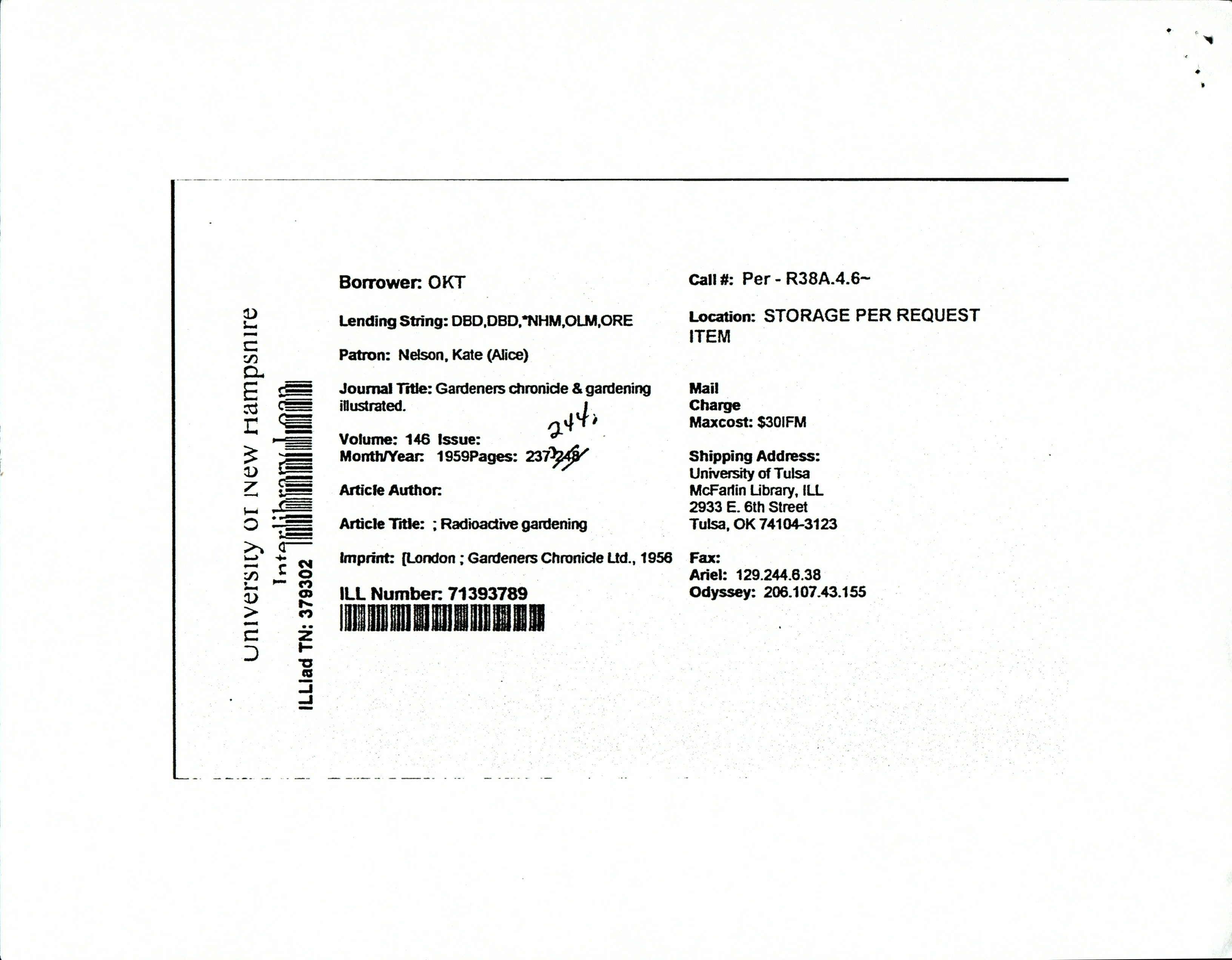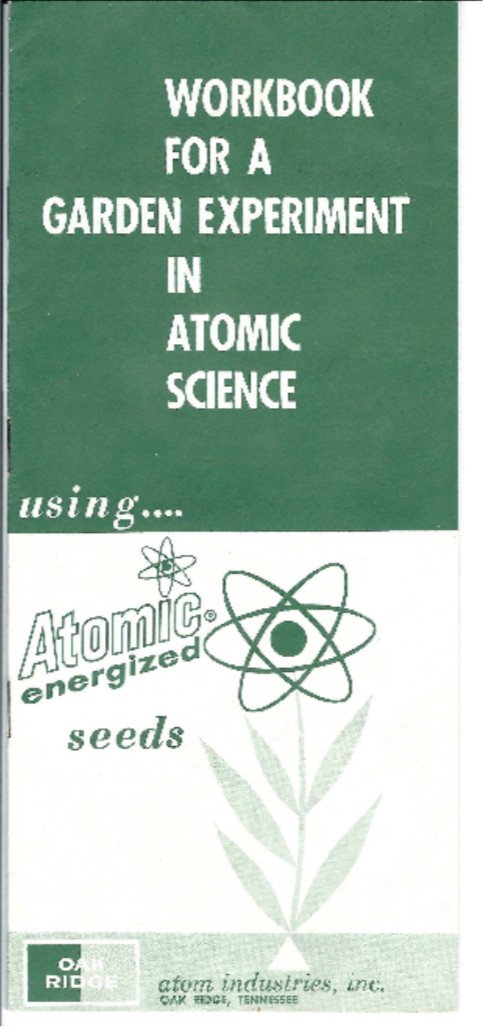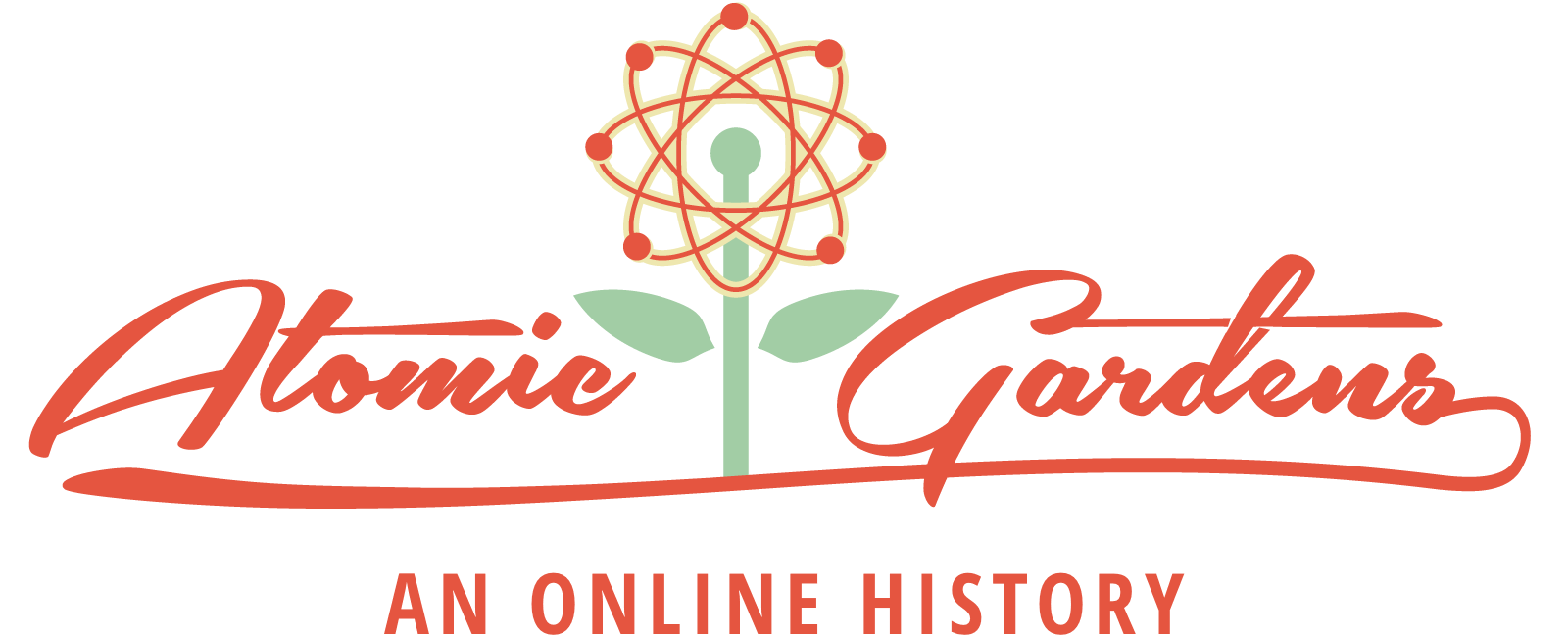The Atom-blasted Seeds of C.J. Speas, atomic entrepreneur
One of the most startling aspects of the “Atoms for Peace” program was a little known and very short-lived goal of encouraging atomic entrepreneurship. Yes, for a limited time you could apply to the government for your own radioactive Cobalt-60 source. And keep it in your backyard.
One who did was Clarence J. Speas, erstwhile oral surgeon and serial inventor (he also worked on a three-wheeled car) who had previously experimented with seed irradiation using the x-rays he would have had easy access to within the dental profession. In 1957, the Atomic Energy Commission approved his request for a radioactive source.
He built it into a concrete block bunker on his property in Oak Ridge, Tennessee, near the federal laboratories that had probably sparked his interest in things atomic, and perhaps also provided the connection through which he obtained his Co-60.
By 1960, he had founded “Oak Ridge Atom Industries, Inc”, and was irradiating seeds for sale to the public in packets marked “Atom-blasted”. C.J. was as committed to self-publicity as was Muriel, and press accounts seem too fantastic to be believed, trumpeting a 10 foot tall tomato plant that produced more than 200 tomatoes.
They probably do, however, accurately reflect the types of seeds with which he experimented: various reports list lettuce, sweet corn, radishes, straight neck squash, peppers, midget water melons and green beans. C.J. didn’t neglect flowers either; targeting poppies, pinks, petunias, morning glories and the man-in-the-moon marigolds that would later be immortalized by Paul Zindel in his Pulitzer prize-winning play.
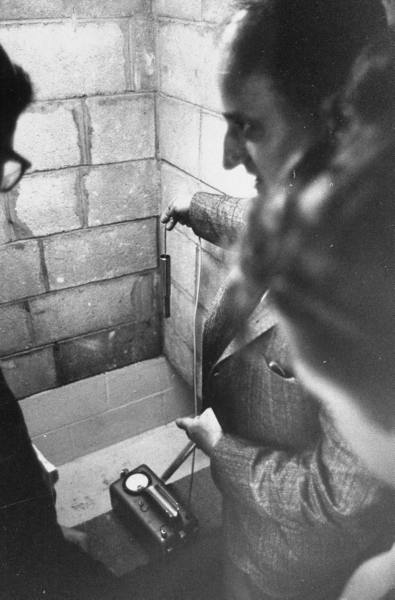
Dr. Clarence J. Speas touring his bunker with a group of 9th graders – May 1958 Photographer: Grey Villet Photo: Life hosted by Google
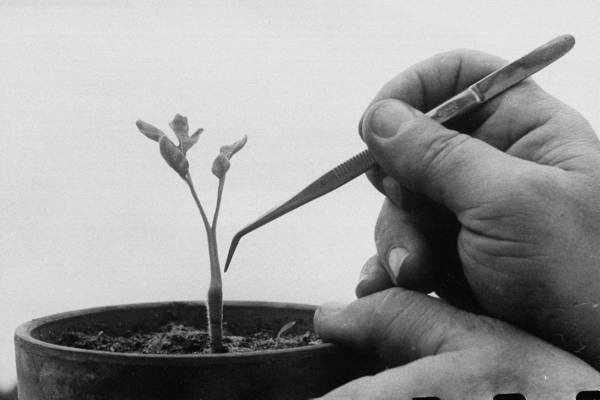
Tomato plant from irradiation seed – May 1958 Photographer: Grey Villet Photo: Life hosted by Google
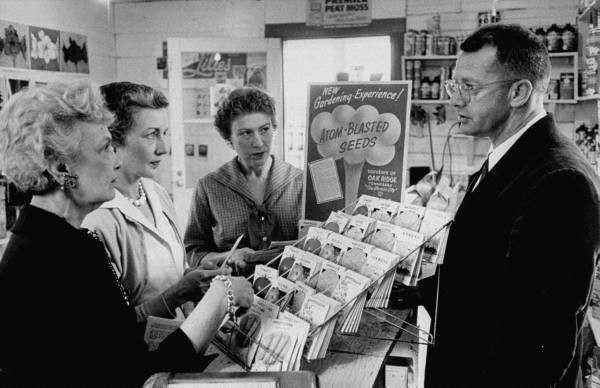
Atom-blasted’ seed rack in store which will produce mutations – May 1958 Photographer: Grey Villet Photo: Life hosted by Google
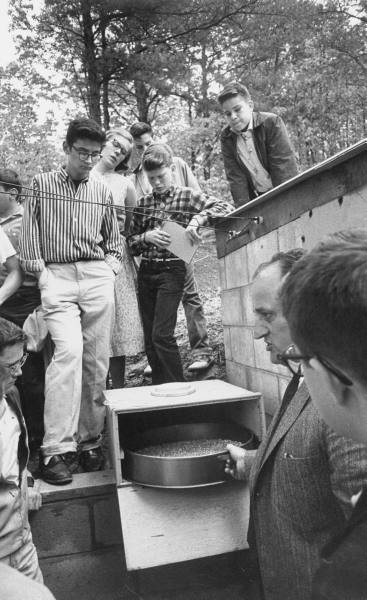
Dr. Clarence J. Speas explaining seed irradiation to 9th graders – May 1958 Photographer: Grey Villet Photo: Life Hosted by Google
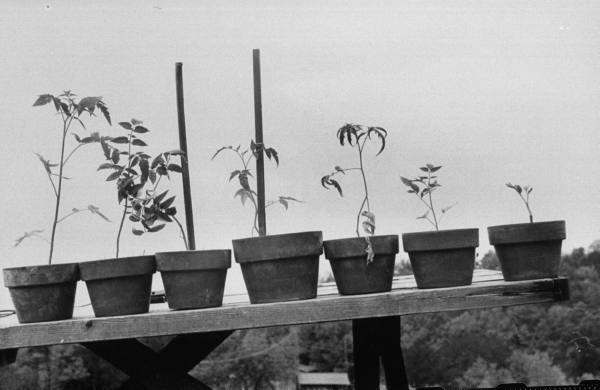
Tomato plants from irradiation seeds bombared by radiation of cobalt 60 – May 1958 Photographer: Grey Villet Photo: Life hosted by Google
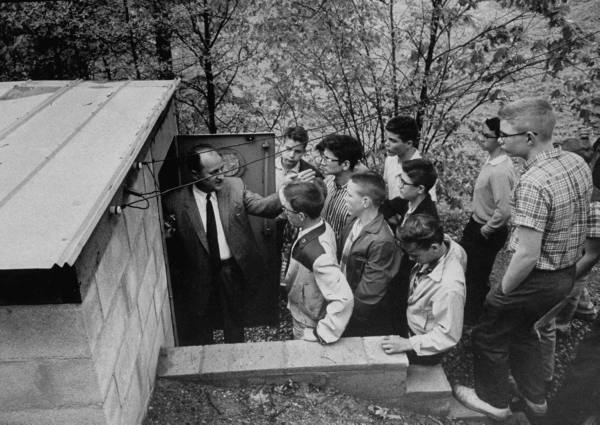
Dr. Clarence J. Speas explaining seed irradiation to 9th graders – May 1958 Photographer: Grey Villet Photo: Life hosted by Google
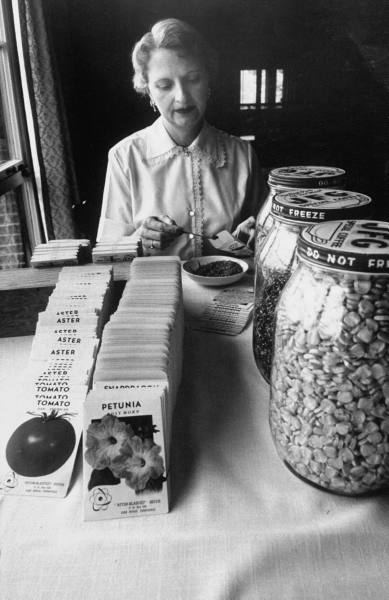
(a very tired looking) Mrs. Clarence J. Speas packaging irradiated seeds – May 1958 Photographer: Grey Villet Photo: Life hosted by Google
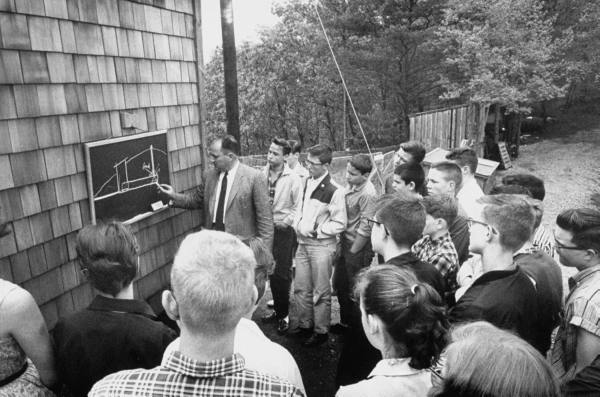
Dr. Clarence J. Speas explaining seed irradiation to 9th graders – May 1958 Photographer: Grey Villet Photo: Life hosted by Google
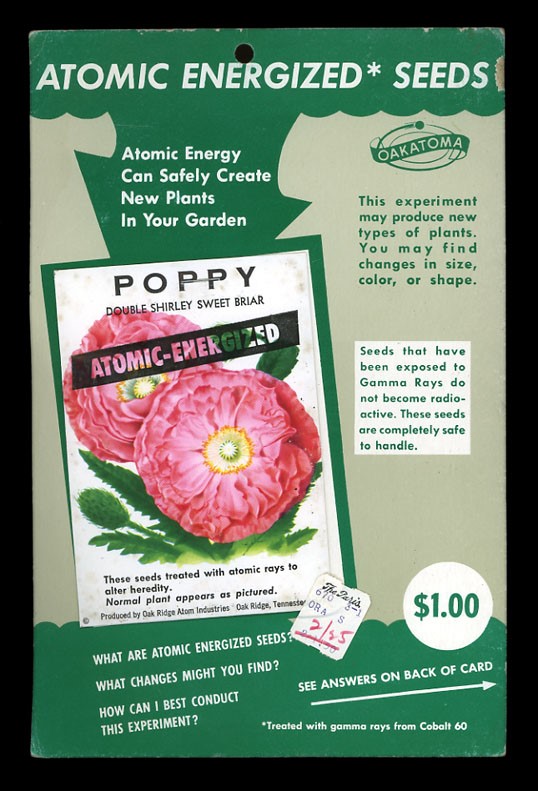
Irradiated seed packets, treated with gamma rays from Cobalt 60, produced by C.J. Speas at Oak Ridge Atom Industries. Note that C.J. has changed his tag-line from the agressive “Atom-blasted” to the milder “Atomic-energized”. From Paige Johnson’s personal collection of atomic garden artifacts.
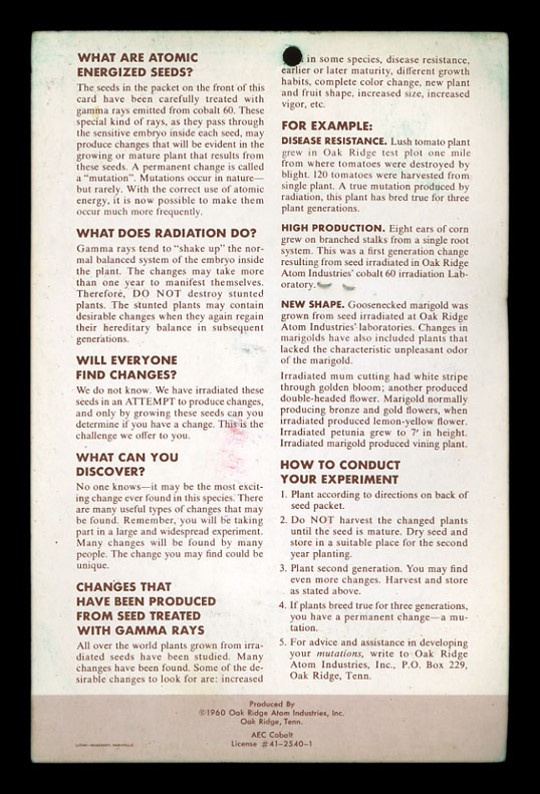
Back of seed packets. From Paige Johnson’s personal collection of atomic garden artifacts.
